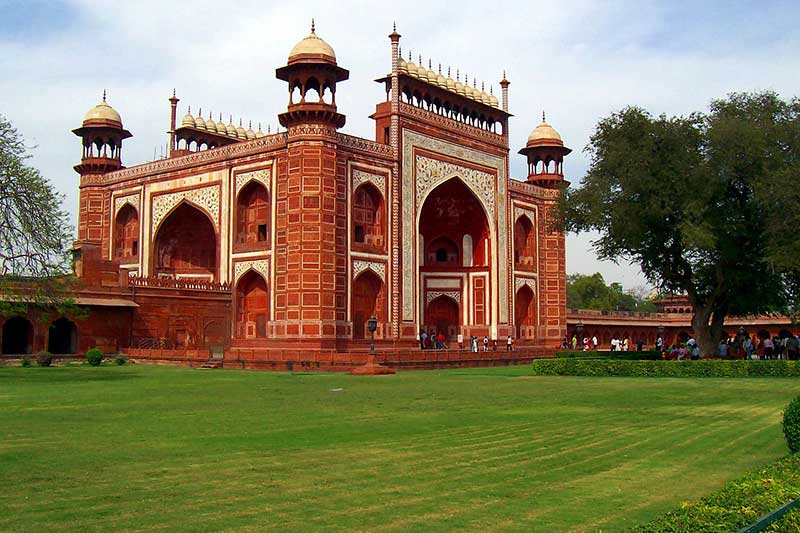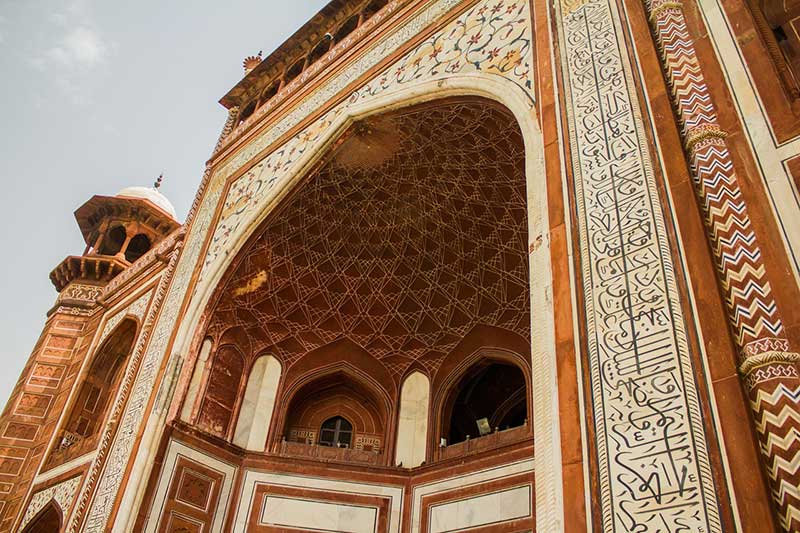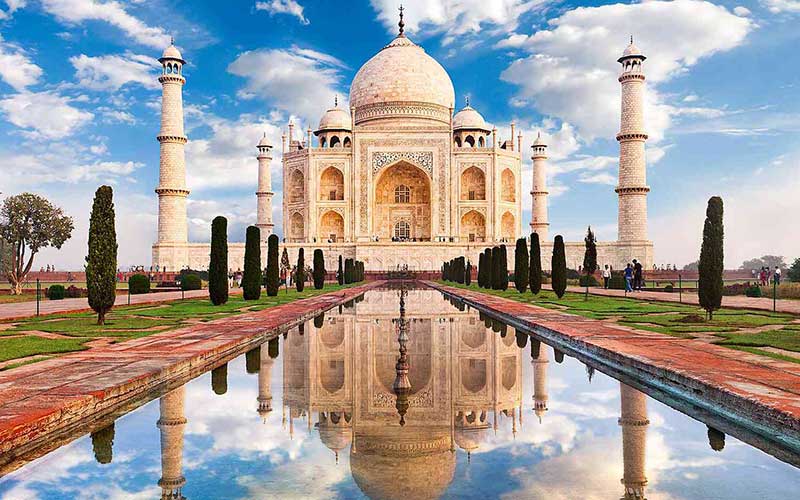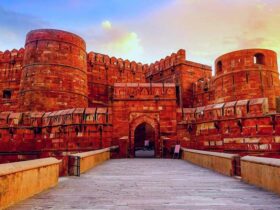The Taj Mahal, an epitome of love and an architectural masterpiece, stands as a testament to human ingenuity and devotion. Its gleaming white marble structure has captured hearts and imaginations across the globe. Let’s embark on a journey through the rich history and captivating stories surrounding this iconic monument.
The Symbol of Eternal Love
Commissioned by Mughal Emperor Shah Jahan in memory of his beloved wife Mumtaz Mahal, the Taj Mahal is a symbol of eternal love. This mausoleum’s construction began in 1632 and took over two decades to complete, showcasing an unparalleled blend of Islamic, Persian, and Indian architectural styles.
Architectural Grandeur and Aesthetic Elements
The Taj Mahal’s architectural grandeur is a harmonious fusion of diverse elements. Its central dome, minarets, and intricate carvings demonstrate the finest craftsmanship. The perfect symmetry of the monument is a visual delight, drawing visitors into its enchanting embrace.
Meticulous Inlay Artistry: Pietra Dura
One of the Taj Mahal’s most mesmerizing features is the intricate inlay work known as pietra dura. Semi-precious stones are meticulously cut and polished to create elaborate floral motifs and intricate patterns, adorning the walls with a tapestry of vibrant colors.
Construction Challenges and Triumphs
The construction of the Taj Mahal was no easy feat. Skilled artisans and laborers worked tirelessly to realize Shah Jahan’s vision. The logistics of transporting materials from distant places, including the famous Makrana marble, showcased the empire’s vast resources and determination.

Garden Charms: Charbagh Concept
The Taj Mahal’s surroundings are as captivating as its structure. The charbagh, or Persian-style garden, adds an element of serenity and elegance. The meticulously laid out quadrilateral garden symbolizes the four rivers of paradise and offers a tranquil space for contemplation.
Taj Mahal’s Changing Hues
The Taj Mahal appears to change color depending on the time of day. From the soft hues of dawn to the radiant glow of sunset, and under the moonlit sky, the monument’s ethereal beauty transforms, casting a spell on all who behold it.
Preservation Efforts and UNESCO Recognition
Recognizing its cultural significance, the Taj Mahal was designated a UNESCO World Heritage Site. However, pollution and environmental factors have taken a toll on its pristine white facade. Ongoing preservation efforts aim to safeguard its splendor for future generations.
Myths, Legends, and Folklore
The Taj Mahal has inspired countless myths and legends. From tales of hidden treasure to stories of doomed love, these narratives add an aura of mystique to an already enchanting monument.
Taj Mahal as an Inspiration
The Taj Mahal’s influence extends beyond its architectural beauty. It has inspired poets, writers, and artists, fostering a sense of awe and creativity that transcends time and borders.

Taj Mahal: A Palimpsest of Cultures
The Taj Mahal is a testament to India’s rich cultural heritage. It stands as a fusion of various artistic and architectural traditions, showcasing the cultural exchange that flourished during the Mughal era.
Impact on Modern Architecture and Design
The Taj Mahal’s influence resonates in modern architecture and design. Its timeless elegance and meticulous craftsmanship have left an indelible mark, evident in various structures worldwide.
Tourist Magnet and Cultural Icon
Drawing millions of visitors annually, the Taj Mahal’s allure as a cultural icon remains strong. Its universal appeal and poignant history make it a must-visit destination for travelers from all walks of life.
Controversies and Criticisms
Despite its universal acclaim, the Taj Mahal has faced controversies and criticisms. Debates surrounding its origin and allegations of historical inaccuracies remind us of the complexity of preserving cultural heritage.
Taj Mahal in Popular Culture
The Taj Mahal’s magnificence has made its way into popular culture. From movies to music, its beauty continues to captivate and inspire artists across various mediums.
Conclusion
The Taj Mahal’s rich history is a tapestry woven with threads of love, artistry, and architectural brilliance. It stands as a testament to human devotion and creativity, leaving an indelible mark on the world stage.
FAQs
Is the Taj Mahal the only monument of its kind?
While the Taj Mahal is unique in its design and history, similar architectural styles and concepts can be found in other monuments worldwide.
How has air pollution affected the Taj Mahal?
Air pollution has led to discoloration of the Taj Mahal’s marble façade over time, prompting conservation efforts to mitigate its impact.
Are there any night tours of the Taj Mahal?
Yes, night tours are available on specific days during full moons, offering a unique perspective of the monument’s beauty.
What is the best time to visit the Taj Mahal?
The early morning hours are recommended to witness the Taj Mahal’s changing hues and avoid crowds.
Can visitors enter the main mausoleum?
Access to the main mausoleum is restricted to preserve its interior, but visitors can admire its beauty from the outside.

















